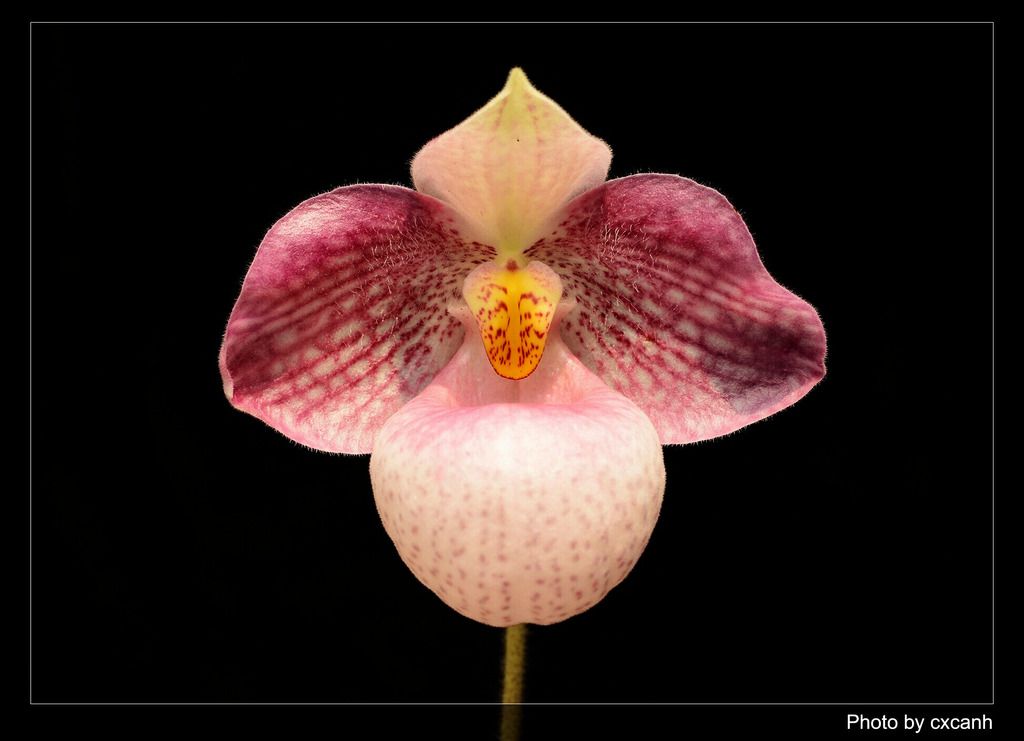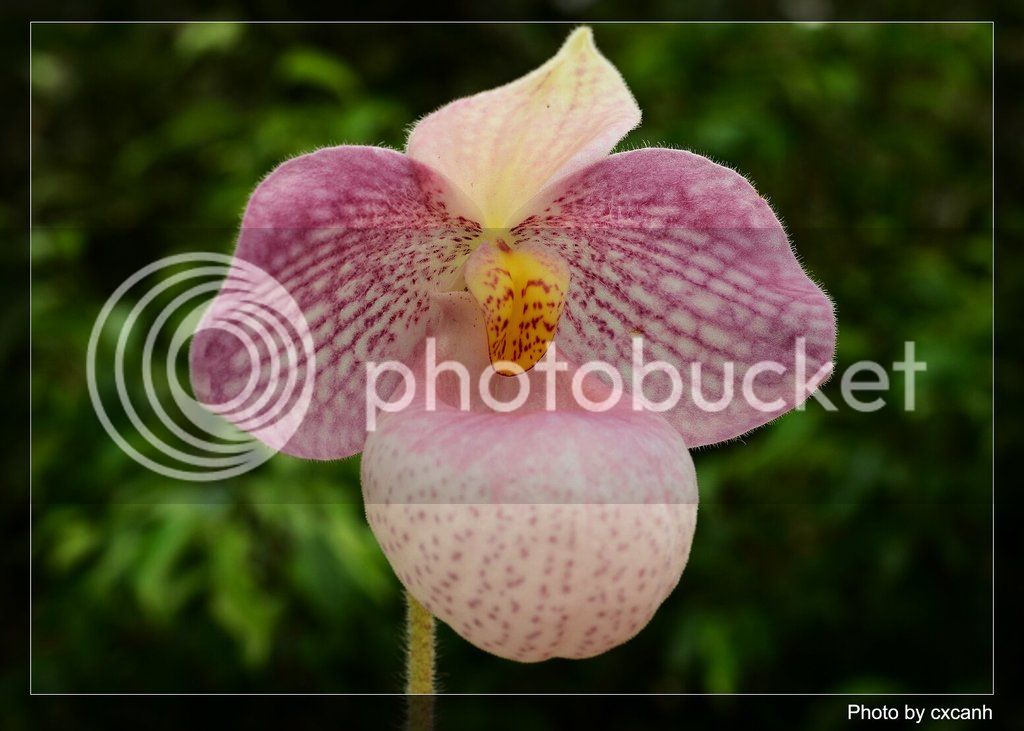You are using an out of date browser. It may not display this or other websites correctly.
You should upgrade or use an alternative browser.
You should upgrade or use an alternative browser.
Natural hybrid of P.micranthum
- Thread starter cxcanh
- Start date

Help Support Slippertalk Orchid Forum:
This site may earn a commission from merchant affiliate
links, including eBay, Amazon, and others.
very pink for a fanaticum.
Do the range of these species overlap?
Do the range of these species overlap?
NYEric
Well-Known Member
Interesting.
Spaph
Well-Known Member
Amazing color, what a very special plant!
John M
Orchid Addict
It's beautiful! But, it does not look like Liberty Taiwan or Fanaticum to me. It does look like emersonii is in there. Look at the spots inside the pouch and the shape of the staminode. Very emersonii-like. 'Would LOVE to know what this really is.
Last edited:
PaphMadMan
phytomanic
Looks like Lola Bird to me, micranthum x emersonii. The staminode, the spotting in the pouch, quite typical.
NYEric
Well-Known Member
true.
mrhappyrotter
Grand Chupacabra
The spots are pretty suggestive to me. Of the known parvi species I'm aware of, the most obvious sources for those spots is malipoense or emersonii. If emersonii can be ruled out 100%, then I can only assume they come from malipoense. The staminode doesn't really suggest malipoense parentage, though.
Keep in mind that, while the odds are probably infinitesimal, when you have 2 species in the same habitat and which bloom at approximately the same time (and which are known to naturally hybridize), if the offspring are fertile and conditions are just right, there's potential for near-primary natural hybrids to result.
We know that Fanaticum is a natural hybrid, perhaps one of the micranthums naturally hybridzed with a Fanaticum. That'd be enough to wash out the mali staminode while still possibly explaining the pouch spotting.
All that considered, I will say that it looks very much like a P. Lola Bird to me.
Keep in mind that, while the odds are probably infinitesimal, when you have 2 species in the same habitat and which bloom at approximately the same time (and which are known to naturally hybridize), if the offspring are fertile and conditions are just right, there's potential for near-primary natural hybrids to result.
We know that Fanaticum is a natural hybrid, perhaps one of the micranthums naturally hybridzed with a Fanaticum. That'd be enough to wash out the mali staminode while still possibly explaining the pouch spotting.
All that considered, I will say that it looks very much like a P. Lola Bird to me.
was this photographed insitu or at a nursery??
cxcanh
Well-Known Member
- Joined
- Apr 30, 2010
- Messages
- 744
- Reaction score
- 392
was this photographed insitu or at a nursery??
That is from home.
Here with black bacground

the furry petals suggest hangianum in there.
Ah well, it's beautiful no matter what it is.
Marco
Slipperless member
Beautiful!
Happypaphy7
Paphlover
Nope, no malipoense in there.
It is glanzii, a natural version of Lola Bird, which is micranthum x emersonii.
It is a good one, too!
Canh, was this found in nature that you can say it is a natural hybrid or??
If yes, are these found as a population or some random plants here and there?
It is glanzii, a natural version of Lola Bird, which is micranthum x emersonii.
It is a good one, too!
Canh, was this found in nature that you can say it is a natural hybrid or??
If yes, are these found as a population or some random plants here and there?
Happypaphy7
Paphlover
the furry petals suggest hangianum in there.
You can't go by that as hairs are features of other flowers as well.
Emersonii, though lesser degree than hangianum, as well as other parvis all have hairs on the petals.
Also, I have malipoense, Magic Lantern, Wossner China Moon (hang primary) all hairs, but guess which one of these is the hairiest?
Magic Lantern!
Lola Bird can look very similar to Liberty Taiwan depending on the clones, but the staminode on this particular one is very typical of Lola Bird or emerosnii hybrid.
KyushuCalanthe
Just call me Tom
- Joined
- Jan 12, 2008
- Messages
- 8,195
- Reaction score
- 488
It certainly is beautiful.
Similar threads
- Replies
- 3
- Views
- 322
- Replies
- 1
- Views
- 514



